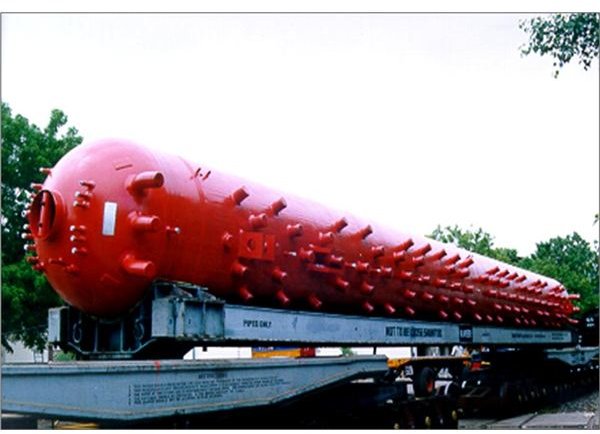How Large Boiler Drums for Power Plants are Made
Power and process boilers have a large cylindrical vessel called the Drum. Early boilers had as many as four drums, but present day boilers have either one or two drums. A 210 MW boiler drum weighs about 130 tons and a 500 MW boiler drum about 250 tons. The drums of bi-drum boilers can be anywhere near 100 tons. The boiler drums have large stubs welded, many instrument tapings, safety valve stubs, and internals to maintain the quality of steam and distribute the feed wate, and a facility to dose the chemicals uniformly across the length of the drum. Boiler drums are generally made of carbon steel of boiler quality plates of varying thickness depending on the design pressure of the boiler.
Stages of manufacturing drum
- Plate quality check by ultrasonic test
- Review ultrasonic test report and steel supplier test report
- Move plate to heating furnace and heat to 850 - 870 deg C. Use incremental pressing in a 6000 or 8000 ton hydraulic–beam press and work it to get the shell shape based on the shell inside diameter
- Cold press the plate to the final specified shape when plate is below 130 deg C, but not below room temperature
- The shell is moved to a special weld bevel machine for beveling the ends
- Tack weld the counterpart (wrapper) shell which is slightly thinner
- Weld longitudinal seam by submerged-arc process in thin layers in succession maintaining a preheat of 150 deg C
- Back gouge the inner side after the outer weld is completed to a sound metal using electric arc process
- The weld is finished using the automatic submerged-arc welding
- The shell is welded 20 % on each side alternatively to control distortions of the shell
- Grind the longitudinal weld flush both inside & outside and do magnetic particle test
- Do radiography of the weld using a linear accelerator (4MeV or above)
- If necessary repair using a low hydrogen electrode at 150 deg C preheat
- Re-radiograph after repair till test results are satisfactory
- All nozzles and nipples are drilled in the drum shell
- Weld the nozzles and nipples by manual arc welding using low hydrogen electrode with 150 deg C pre heat
- Join the first two shells with a girth seam and grind the weld and do magnetic particle test and radiography of weld to ensure weld quality
- Weld the hemispherical shell to the end of the shell always maintaining 150 deg C preheat while welding and do magnetic particle test and radiography of weld
- Each of the two assemblies are stress relieved at 605 deg C plus / minus 5 deg C
- Put the internal structures in place and then the final girth weld is made maintaining preheat of 150 deg C. This weld is locally stress relieved, followed by magnetic particle test of all welds
- Finally paint the outer surface and the drum is ready for shipping to the site.
A typical 500 MW drum is shown in the photo, courtesy Bharat Heavy Electricals Ltd, Trichy, India.
500 MW Boiler Drum Ready for Transport
Related Reading
Carryover from Boiler Drum - Carryover from the boiler drum leads to deposit in superheaters of boiler and turbine blades. Carryover from drum is of two types- mechanical and vaporous carryover. Deposits in superheater tubes results in overheating failure. In the turbine, this reduces the turbine efficiency.
Handle Low Drum Level in Boiler Operation - Low drum level operation leads to availability loss of the boiler. Water wall tubes fail due to short term overheating. Never bye-pass the very low drum level trip in boiler is to be adopted. Drum level in boiler indicates the level of water in drum for enabling the steam generation without hurdle.
